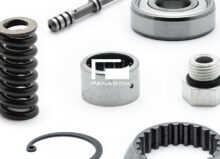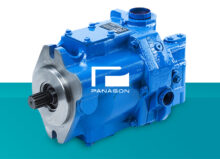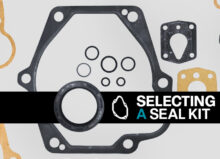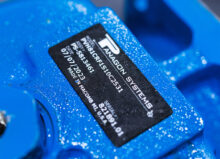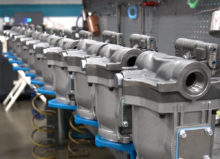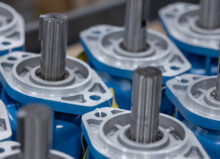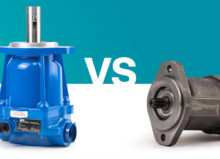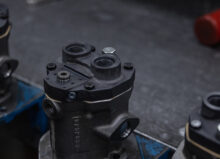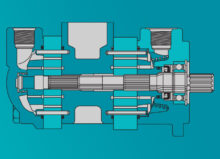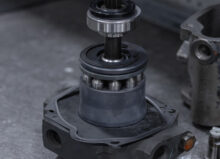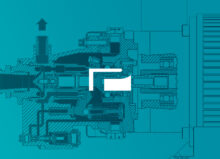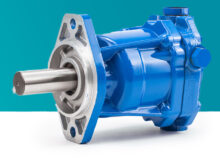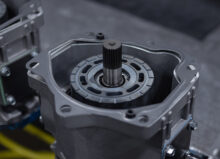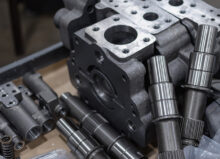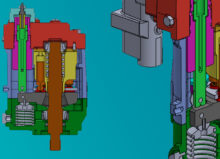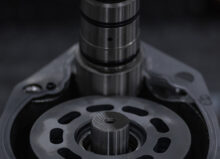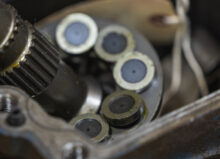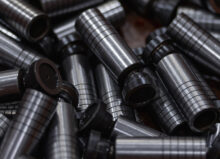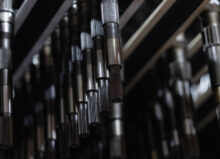Replacing a Hydraulic Pump: What You Need To Know
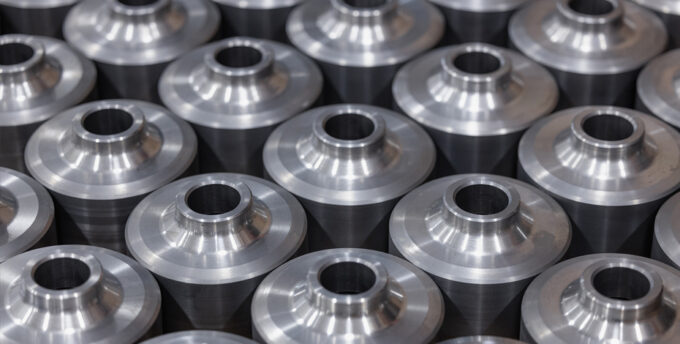
Replacing a failing hydraulic pump can be challenging. If the wrong alteration is made, you risk damaging your entire hydraulics system. Furthermore, there are many reasons why your pump may be failing, but not all of them may require a full replacement.
If your hydraulic pump isn’t working like it used to, you need to start troubleshooting as quickly as possible. Waiting until total failure will only result in costly downtime for your plant.
In this blog post, we’ll cover why hydraulic pumps fail, signs to look out for when you’re inspecting your pump, how to replace a pump, and more.
Why Do Hydraulic Pumps Fail?
Some of the most common causes of hydraulic pump failure include fluid contamination, excess pressure, poor fluid quality, cavitation, excessive temperatures, and uncorrected leaks.
Fluid Contamination
Contaminated fluid is the most common cause of hydraulic pump failure. It can take place when particulates get into the system through a cylinder rod or breather valve. Sometimes deficient repairs are the culprit. Contaminants can change the fluid properties, create buildup, and corrode parts, all circumstances that reduce the system’s efficiency.
Excess Pressure
Every pump is built to work within a specific safe pressure range. Pressures greater than this overwork the pump. The pump is likely to become damaged and eventually stop working entirely. In extreme cases, excess pressure can cause an explosion.
Poor Fluid Quality
It’s critical to use high-quality cooling and lubrication oil with the correct mineral content and viscosity. Purity of fluid content is especially important for higher-pressure systems. Fluid that’s too viscous can lead to cavitation, which is a serious risk for pump damage. If the viscosity is too low, heat and friction levels can become dangerously high.
Cavitation
If vapor cavities arise, they can implode under pressure, which can erode the metal and contaminate the fluid. To prevent this, it’s important to properly maintain intake lines, keep fittings and clamps tight, maintain the correct fluid level, and check for leaky pump shaft seals.
Excessive Temperature
Temperatures above 180 degrees Fahrenheit can cause seal damage and fluid degradation. Depending on the fluid viscosity, that maximum temperature could be even lower. Overheating can be caused by low reservoir fluid levels, reservoir airflow obstructions, heat exchanger core blockage, internal leaks, and cavitation.
Uncorrected Leaks
Leaks can arise from inadequate seals or internal component damage. If these aren’t taken care of, contaminants may enter the system and compromise the pump’s performance.
Signs You Need to Replace Your Pump
When inspecting your pump, looking out for these common signs:
- Increased Noise: All mechanical actuators make noise during operation, but hydraulic systems should not produce loud banging or knocking sounds. If you notice a new, unusual sound coming from your device, it may be experiencing cavitation or aeration.
- High Temperatures: Hydraulic systems should never exceed 82 degrees Celsius/180 degrees Fahrenheit. If you detect a higher-than-average temperature, there may be a buildup of residue in the system. You need to address the problem quickly, as temperature changes can damage a pump quickly.
- Sluggish System: If your system is functioning slower than usual, that may mean a loss of pressure, which can indicate internal leaking.
How to Replace a Pump
- Discover the main cause of the pump’s issue.
- Remove the failing mechanism.
- Retract all unit rods.
- Eliminate all fluid in the tank.
- Flush the tank with diesel fluid while the unit is powered on. Wipe away any residue.
- Replace the old filter with new filters.
- Mount and connect the new pumps.
- Put new oil in the tank. Be sure to fill the tank with the required oil grade, as pumps can fail if the wrong oil is administered throughout the system. Pumps require a consistent supply of oil and can fail if the levels drop too low.
- To prepare each circuit to flush the valves and lines with new oil, move the control valve handles upward.
- Connect all lines to the cylinders and liquid motors. The rod end should be left disconnected. Turn on the circuits until the cylinder bottoms out. This process will flush contaminated oil from the cylinder. Repeat this process as many times as necessary. Reconnect lines to the rod end of the cylinder and add more oil as necessary.
- Change the filter for a final time.
Unless you have prior experience performing replacements, we recommend hiring a licensed professional to perform any hydraulic pump replacements.
How Often Should You Replace a Hydraulic Pump?
Exact life expectancy depends on the specific pump and how frequently it’s used, but pumps often last for quite a few years. The manufacturer of your pump should specify how many hours or cycles a pump can be expected to provide before replacement is recommended.
Another critical factor in pump longevity is preventative maintenance. This includes daily maintenance tasks as well as those that need to be done annually.
Maintenance Suggestions
There are checks that should be done every day before use:
- Check Oil Level
- Check Temperature
- Check for Contamination
- Check the System for Leaks
On an annual basis:
- Check the Entire Hydraulic System
- Drain & Change the Oil
- Inspect All Components
In addition, perform any maintenance tasks the manufacturer recommends for your specific pump. And, always keep a record of completed maintenance tasks.
How Much Does It Cost to Replace a Pump?
The exact cost depends on the type of pump, the pump manufacturer, and whether the replacement is done by a professional. Often a professional hydraulic pump replacement, including labor and parts, is in the vicinity of $1,500. The price depends on whether you buy directly from the manufacturer or from a third party.
Sometimes direct OEM replacement parts are expensive, and it can take weeks or months at times to receive the part. If you’re experiencing an emergency, or your pump has been discontinued by the manufacturer, purchasing a remanufactured pump may be the best solution for you, as they’re often less expensive than direct OEM replacements and the waiting times are typically shorter.
If you are purchasing a remanufactured pump, be sure to double check that your manufacturer has an OEM guarantee, as you want to make sure the specifications of the remanufactured pump are the same as the OEM pump you are replacing.
Purchase OEM-Equivalent Hydraulic Pumps & Components From Panagon Systems
If you need help finding the right replacement pump for your system, contact Panagon Systems today.
Founded over 25 years ago, we’ve become the leading U.S. manufacturer of aftermarket hydraulic parts. We specialize in manufacturing, rebuilding, and repairing all types of pumps and components from manufacturers like Vickers/Eaton and Rexroth®. All of our pumps are made in-house in the U.S., guaranteed to meet OEM specifications, and are backed by a 12-month warranty.

